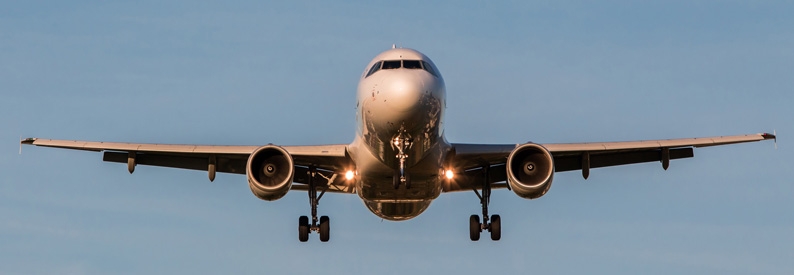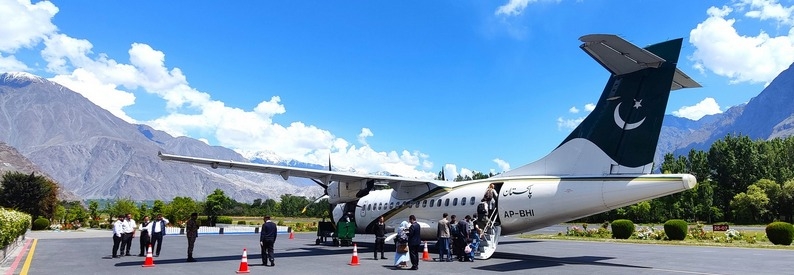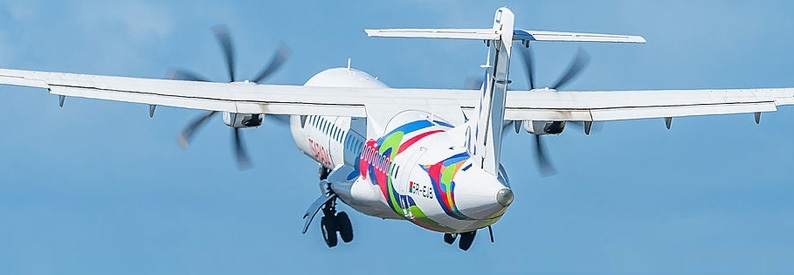Financial institutions are not rushing to the aid of PIA - Pakistan International Airlines (PK, Islamabad International) after the Pakistani government recently rejected its request for a PKR23 billion Pakistani rupee (USD74.8 million) emergency bailout, instead directing the state-owned carrier to secure commercial bank loans against a partial government guarantee.
Last week, ch-aviation reported on the decision of the caretaker government, which drew a line under a series of bailouts. Since then, local media reported that due to the country’s negative credit rating and the dependence on the central bank for foreign exchange, international financial institutions and lessors are steering clear of PIA.
US agency Moody's has awarded Pakistan a Caa3 credit rating, and the country's central bank, the State Bank of Pakistan, can limit access to and the export of foreign currencies, leading to lenders and lessors fearing they will not get repaid. Media reports suggest several A320-200s and B777-200ER type aircraft may soon be grounded because of an inability to meet lease payments. Other aircraft are also out or going out of service because of an inability to pay for required spare parts. Reportedly, PIA owes USD2.5 million in lease payments, while various airports are also owed money, including USD30 million due to GA Havalimani Isletmesi A.S., operator of Istanbul Airport. Saudi airport authorities are also owed USD4.5 million. In total, PIA is reported to be carrying debts of PKR750 billion (USD2.43 billion).
PIA's financial report for the first half of 2023 indicates revenues for the six months of PKR120.3 billion (USD390.3 million) and a pre-tax loss of PKR60.7 billion (USD197 million). In the comparable period in 2022, the airline recorded a pre-tax loss of PKR41.3 billion (USD134.1 million). PIA attributes the bigger 2023 deficit to the depreciation of the local currency against the US Dollar and higher interest rates. The report called PIA's financing costs "exorbitant."
Meanwhile, on August 31, the Federal Board of Revenue (FBR) froze PIA bank accounts again, this time a reported 13 accounts. Such actions are now relatively routine and short-lived and primarily designed to extract some cash or promises of cash from the airline. PIA owes PKR8.84 billion (USD28.7 million) in unpaid federal excise tax and promised to pay PKR2 billion (USD6.5 million) of that amount in August but failed to do so.
Consequently, an irate FBR has written to the Federal Investigation Agency (FIA) suggesting that entity launch a money laundering investigation against PIA, saying despite collecting fares from passengers, the airline has failed to pay the required FIR, instead retaining the funds. The FBR alleges PIA opened separate bank accounts to deposit the money into rather than paying it into accounts set up by the FBR. The FBR complaint specifically cites several senior PIA management figures.
A PIA spokesperson says it is business as usual at the airline. The ch-aviation fleets module reveals that PIA has 33 aircraft in its fleet, including sixteen A320-200s, four ATR42-500s, one ATR72-500, six B777-200ERs, two B777-200LRs, and four B777-300ERs. Cross-matching each aircraft with ADS-B flight tracking data indicates 14 of those 33 aircraft are inactive. Those inactive aircraft include six A320-200s, two ATR42-500s, one ATR72-500, one B777-200ER, and three B777-300ERs. Some of these aircraft are inactive for maintenance reasons, and others are parked.







